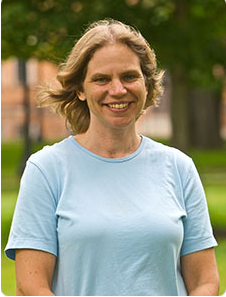By Rebecca Goldfine / Bowdoin News
Bowdoin College’s Eileen Johnson will be collaborating with the Rockland-based Island Institute to help Maine’s 120 coastal and island communities cope with battering storm surges and rising sea levels.
This effort to mitigate climate-induced disasters is being funded by a $240,000 grant from the National Academies of Sciences, Engineering, and Medicine. This grant, awarded to the Island Institute, is part of a $3.2 million pot recently given to almost a dozen coastal organizations, from Alaska to Florida and Maine, to help seaside towns build resilience to coastal flooding and climate change.
Eileen Johnson, an environmental lecturer and Environmental Studies program manager, will serve as one of the key advisors on the project. She has worked with communities in the midcoast on a range of projects that examine approaches for building resilience to sea level rise and storms.
Many of the small towns that dot Maine’s 3,000 miles of coast have working waterfronts and downtowns in flood-prone areas. Additionally, aging infrastructure such as roads, will more vulnerable during storm events that are predicted to increase in frequency and intensity.
Besides Bowdoin, the Island Institute will work with 150 partners — including The University of Maine, Maine Sea Grant, the Gulf of Maine Research Institute, Maine Coastal Program, Darling Marine Center and Knox County Emergency Management — to identify risks to Maine’s working waterfront.
The grant will enable the organizations to develop an inventory of available resources to help towns grapple with environmental changes, as well as identify communities that have already put in place successful strategies.
“Maine’s geography, with its long coast line and peninsular towns, presents unique challenges in addressing the combined effects of increasing storm events and rising sea levels,” Johnson said. “With our island and coastal communities already facing resource limitations in addressing these impacts, it is critical that we develop creative solutions for ensuring their resilience.”


